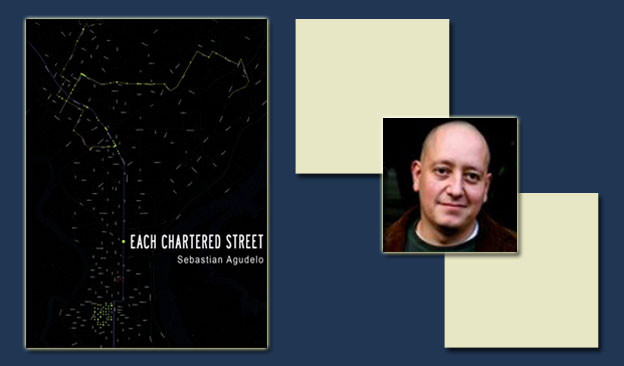Poetics of critical cartography
A review of Sebastian Agudelo's 'Each Chartered Street'

Each Chartered Street
Each Chartered Street
Each Chartered Street is a critical cartography of the poetics of space. The city of Philadelphia is the source of semiotics for this collection of poetry; this book maps, imagines, builds, and evokes the city as a city in its period of time. As a speaker with the eye of a Renaissance man, Agudelo captures contemporary Philadelphia and remixes the everyday of its citizens, neighbors, commuters, students, children, and families. What does it mean to observe and document a city in context, within the bounds of its own time, conditions, or trends? And what occurs when we are guided by an attentive, East-Coast flâneur who records parts of the town through poetry?
In three parts, Agudelo skillfully interprets the present day as history and everyday people as subjects through a documentary poetics. In the style of a teacher-philosopher flipping through various thoughts while sauntering down the sidewalk, riding the bus, or driving past pedestrians, Each Chartered Street joins today’s ways of documenting and seeing with documenting and seeing as a semiotician, of sorts, in search of and in order to strengthen the power of inhabiting a place.
In the eleven-part long form poem “Commute,” an amalgam of teenagers and young adults, commuters, and blue-collar workers make the place and make up the transit. The experience of coming into contact with such heterogeneity posits the speaker’s musings: “They want to know / what’s on the test, to go on to their lives, / pay tuition, wait tables, work for tips” (20). It is this exacting and beautiful attention to the ordinary that sublime moments take place. The speaker also discloses more particulars about an individual on their commute:
I’m not making him up,
just tallying the odds that last night’s pop-off
on Marion street might be the tattoo parlor’s
next job, just charting how wide or narrow
a semantic radius tells near from close (17)
The blend of experience, expectation, and code-switching chronicles “the now” as the artifact and “the observer” as the social anthropologist whose academic leanings are made apparent. Agudelo proves that history is present as it carries and moves forward — that it consists of the many moments on street corners, in neighborhoods, in seemingly random conversations with passersby and strangers just as it is a remembered and studied account of events.
Agudelo’s diction reveals a multidimensional, cultured, and wise perspective. For instance with the poem “Corner”:
What does Coetzee say? In a time out of time,
at either side of the divide you’ve got children
of paradise, fresh off swimming lesson, riding, ballet,
soft as putti, shinning with angelic light, fenced in (32)
The activity captured in these four lines weaves pieces from literary, journalistic, and historic nuances. If the readers joined the speaker in standing still and watching the neighborhood pass by, the community becomes busy and comes alive. Furthermore, the body and the environment are privy to the design of the metropolis;, that is, readers are gestured by the speaker zoom in on and take up space in the city, too. Readers witness the soundscape of the block:
[…] a Chevy Impala coup —
detailed with racing stripe to match the neon
glowing from the undercarriage, rims spinning
to a distortion that gathers more momentum
every beat — is commandeered by a kid adjusting
his lycra du-rag in the rear-view mirror. (32)
The din can be part of larger space of the street, and it can be the focus within a cart of public transportation: “I drift to tinny hip hop. It sizzles / from the speaker of a clamshell phone” (16). Because the speaker is immersed in their thoughts, the orchestra of the city, and a divulging inlay, the reader becomes astute.
Each Chartered Street is living and breathing. The poetry is a place for people to dive in and engage all social layers. The language is in itself a trip that strolls. It is a world unlatched where the people are somehow linked. I recommend that readers spend time with each word, provocation, moment, and street.